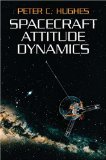NASA dicit:
When NASA’s OSIRIS-REx spacecraft arrived at asteroid Bennu in December 2018, its close-up images confirmed what mission planners had predicted nearly two decades before: Bennu is made of loose material weakly clumped together by gravity, and shaped like a spinning top. This major validation, however, was accompanied by a major surprise. Scientists had expected Bennu’s surface to consist of fine-grained material like a sandy beach, but were instead greeted by a rugged world littered with boulders – the size of cars, the size of houses, the size of football fields. Now, thanks to laser altimetry data and high-resolution imagery from OSIRIS-REx, we can take a tour of Bennu’s remarkable terrain.
Video credit: NASA’s Goddard Space Flight Center/NASA/University of Arizona/CSA/York University/MDA/Dan Gallagher (USRA): Producer/Kel Elkins (USRA): Lead Visualizer/Jonathan North (USRA): Animator/Adriana Manrique Gutierrez (USRA): Animator/Dan Gallagher (USRA): Narrator/Erin Morton (The University of Arizona): Support/Aaron E. Lepsch (ADNET): Support/“Timelapse Clouds” by Andy Blythe and Marten Joustra; “The Wilderness” by Benjamin James Parsons; “Maps of Deception” by Idriss-El-Mehdi Bennani, Olivier Louis Perrot, and Philippe Andre Vandenhende









 Subscribe to blog posts using RSS
Subscribe to blog posts using RSS










